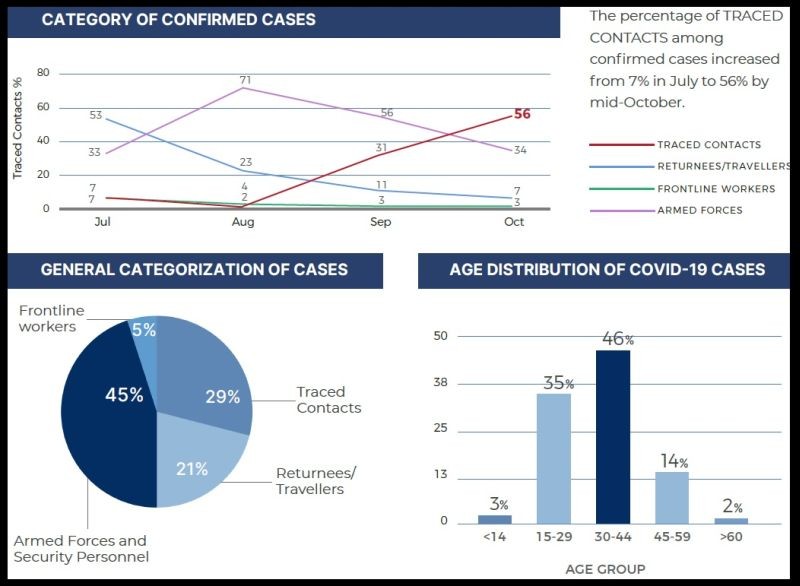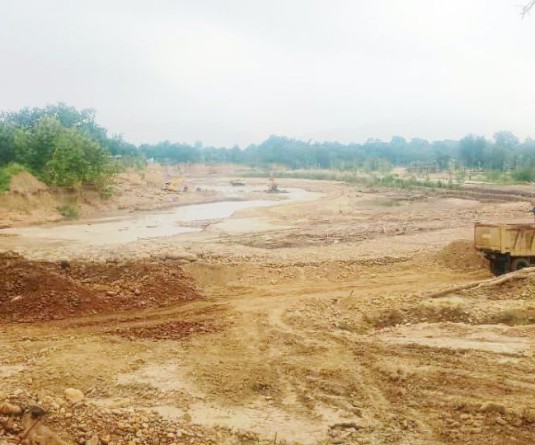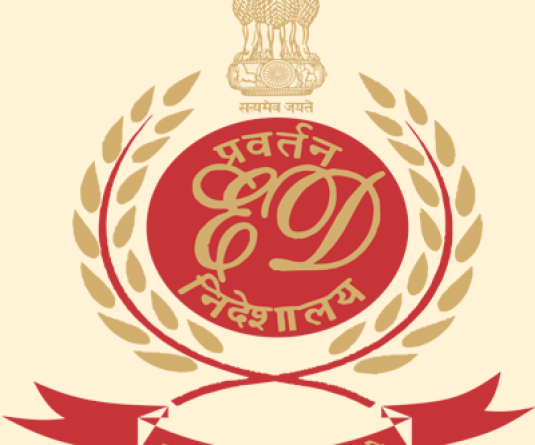Category of Confirmed, General Categorization and Age Distribution of COVID-19 Cases in Nagaland as of October 16. (Image: IDSP/DoHFW, Nagaland)

Avoid social events, crowding, do not become youthful spreaders
Morung Express News
Dimapur | October 17
Doubling time may have extended to 56 days from 14 days but Nagaland continued to report a rising COVID-19 positivity rate. Moreover, recent trend strongly points to a shift towards community spread.
The State Integrated Disease Surveillance Programme (IDSP), Health & Family Welfare, in its latest weekly COVID-19 report, released on October 17, stated, “The percentage of traced contacts among confirmed cases has increased from 7% in July to 56 % by mid-October. This indicates shift of cases towards the community.”
Other observations that pointed to the transmission trend shifting from local to community included the weekly case contribution of traced contacts surpassing that of the armed forces. Of the 716 cases reported during the week, 402 were traced contacts, armed forces- 249, returnees- 48 and frontline workers- 17. “The week also reported the highest number of traced contacts till date.”
It also happened that the week’s total of 716 cases was the second highest number of cases reported in a single week since July-August. The highest weekly total was reported in between July 31-August 6 when 964 cases were reported.
“There has been a gradual increase in cases after the 3rd week of September,” it added.
In the pie chart of case contribution, the armed forces still leads at 45 percent of the total confirmed cases in Nagaland. However, the worrying part was the overall contribution of traced contacts, which rose to 29 percent from 26 percent during the week, racing past returnees.
The returnees’ percentage went down to 21 percent, while frontline workers’ proportion remained unchanged at 5 percent.
A youthful population becoming unintended spreaders was further reiterated in the report. It said, “The highest positive cases among traced contacts is in the 21-40 year-old age group at 53 %. It is again reiterated that infection in the old and high-risk groups immediately follow after infection in the young.”
Rising positivity, sluggish testing
Other major updates from the week included the state lagging behind the national average in terms of tests per thousand and recovery, while positivity rate rose to 8.52 percent from 8.12 percent, previously. As per the IDSP report, for the first time, the state’s sample positivity rate surpassed that of the country’s 7.9 percent.
The positivity rate for the past week was 16.2 percent, which also happens to be the highest to date. This was out of 4,426 samples tested. Comparatively, the positivity rate, as per the previous week’s assessment, was 16 percent of 3,668 samples.
It said that the “Positivity (rate) of patients’ coming to Flu clinics stood 4%, and, “We expect more hospitalizations and severe cases in the coming days.”
Positivity rate among office goers and household contacts, continued to increase, which stood at 27 and 26 percent, respectively.
The positivity rate among students also remained high at 16 percent.
It said, “SOP for prevention of infection in work places and schools should be implemented urgently.”
The testing rate increased to 43.71 per thousand but lagged way behind the national average of 69.22 per thousand. Recovery rate went down to 79.51 percent from 81.69 percent.
Mortality and…
As per the report, the mortality rate increased to 0.22 percent, while, 5 covid-19 deaths were confirmed by the state death review committee in the past week. The most common co-morbidities observed were hypertension and diabetes mellitus.
Symptomatic cases have increased to 4 percent and positives among people with co-morbidities also increased to 0.4 percent.
Pointing to “uncontrolled spread” in closed settings like restaurants, bakery, religious communities, it said, “These are settings where super spreader events happen. The 3Ws should be followed vigorously. Social events and gatherings should be avoided.”
A total of 22,859 quarantine violations were reported from the PHQ through digital monitoring. “One must quarantine mandatorily for 14 days once someone falls under high risk category / if you are a traveler, so that you do not risk people around you,” it said.


.jpg)



